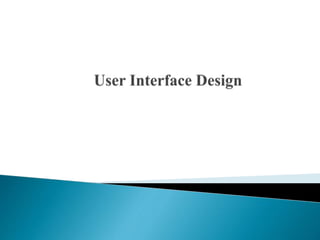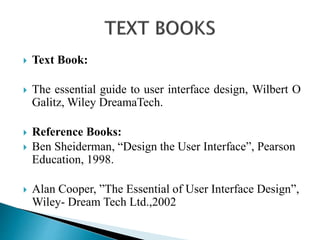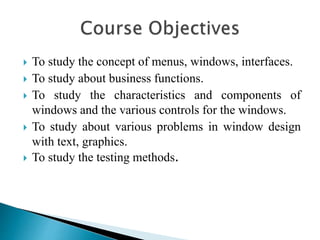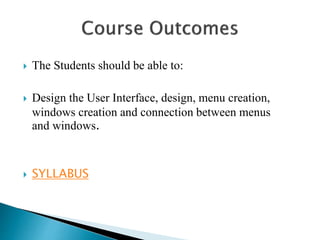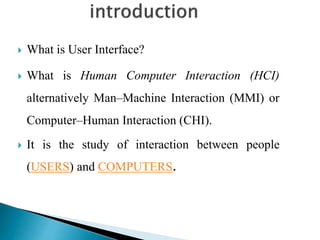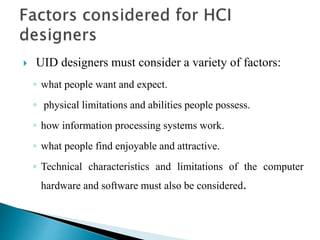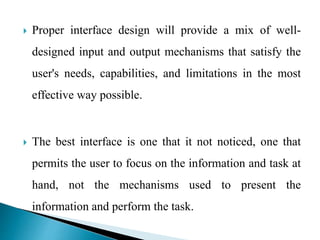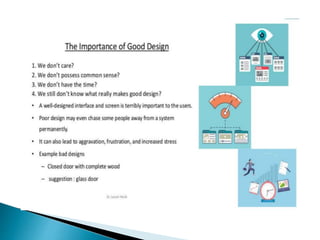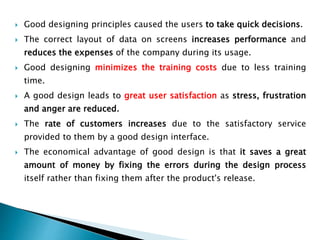The document discusses the evolution of user interface design from the 1970s to the 1990s. It notes that early screen design in the 1970s contained unclear headings and required manuals for understanding. Screens in the 1980s began following design guidelines and provided clearer headings and prompts. Screens in the 1990s incorporated graphics and used menus, buttons, and other controls rather than function keys to provide an intuitive interface. The document traces how interface design has focused on improving clarity, organization, and usability over time.
